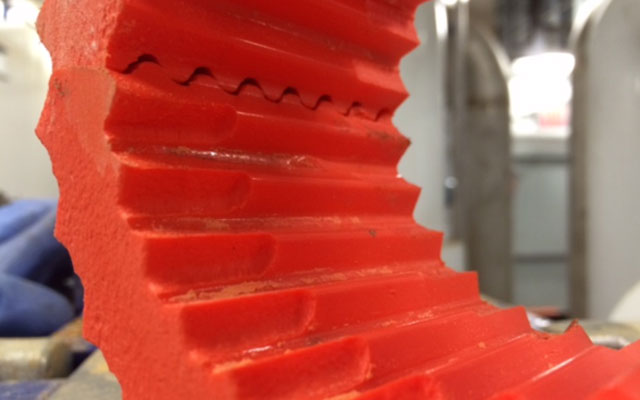Author: Stan Riddle, VibrAlign
Many companies, to their credit, use vibration analysis for diagnosing machinery problems. Whether it is done with portable data collection, cabled sensors, or wireless networks, vibration analysis is an excellent tool for diagnosing many machinery problems. But it should not be the only method used.
The coupling in the photo above was removed from a pump which had little to no signs of excessive vibration due to misalignment.
So, why didn’t vibration analysis pick it up?
While we don’t know all of the specifics regarding this machine, it is a fair assumption to say:
1. The misalignment was not severe enough to cause excessive radial or axial loading of the bearings. While the load may have been more than it should, it was not enough to cause damage –yet. Or, it could have “worn in” the coupling enough to minimize radial forces.
2. The misalignment was not severe enough to deflect the shafts, which probably would have been flagged as misalignment.
3. Any slight degrees of vibration being caused by the misalignment could have been masked by other factors, such as ambient vibration from flow, piping vibration, or vibration from nearby machines.
4. From the looks of the coupling, it was only a few start-ups from ripping out. There is very little left of either the internal or external teeth on the insert.
How would you find the misalignment?
1. Measure it, with a good alignment tool.
2. Inspect the coupling. From the wear, it probably had a great deal of orange dust inside the coupling guard.
Just as one wrench doesn’t fit every bolt, one maintenance technology can’t be used for every problem.





Comments